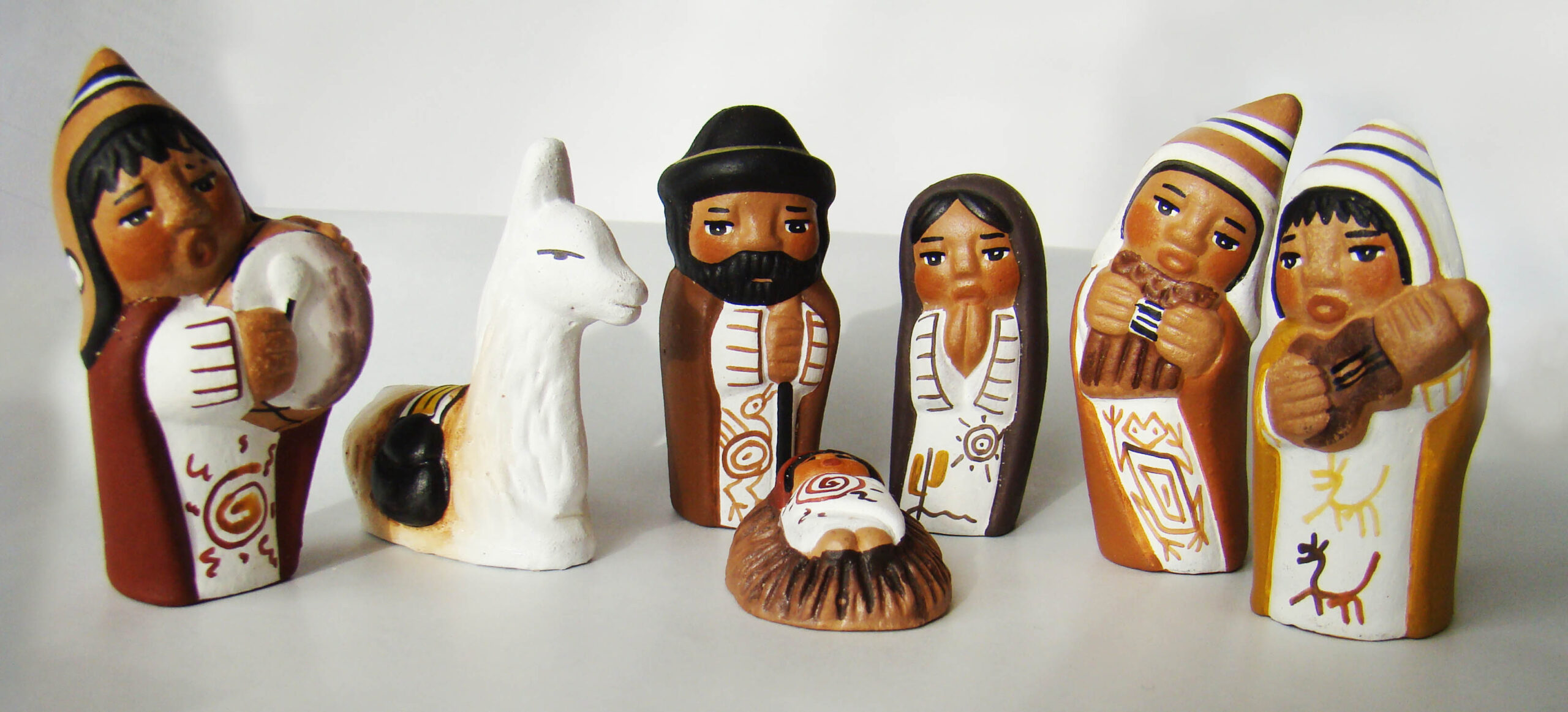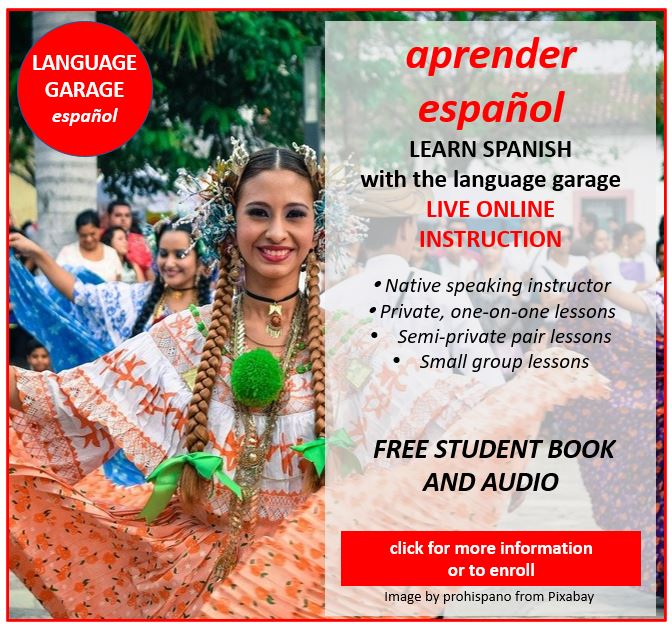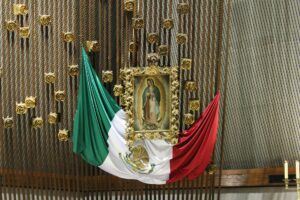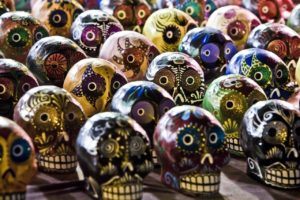Christmas Traditions in Latin America: A Survey of Mexico, Central America, the Caribbean, and South America
In this post we’re going to look at Christmas traditions in Latin America. Throughout the region, Christmas is a time of vibrant celebrations, deeply rooted traditions, and a unique blend of religious devotion and festive joy. Each Latin American country offers its own flavor to the season, reflecting local customs, foods, and cultural heritage. We’ll focus on how people celebrate Christmas in several Latin American countries. First, we’ll visit Mexico and Central America. Next we’ll take a quick tour of the Caribbean. Finally, we’ll wrap up our survey by visiting a few South American countries.
Christmas Traditions in Latin America: Mexico and Central America
Mexico: A Fiesta of Light and Faith
First we’ll visit Mexico. Here, Christmas is a colorful and spiritual affair that begins on December 16th with Las Posadas (The Inns). This is a nine-day reenactment of Mary and Joseph’s search for shelter. Communities throughout Mexico host processions, sing carols, and break piñatas filled with candies and fruits.
On Nochebuena (Christmas Eve), Mexican families gather for a festive meal, often featuring traditional food such tamales, bacalao (salted cod), romeritos, a type of green herb served with mole. Midnight Mass, known as Misa de Gallo (Rooster’s Mass), is a highlight, followed by fireworks to mark the joyous occasion.
Costa Rica: Tradition and Nature
Next we’ll continue our survey of Christmas traditions in Latin America by looking at Costa Rica. In this country, Christmas blends religious devotion with a love for nature. Costa Ricans decorate their homes with nativity scenes called portales. These often feature locally made clay figurines. The season officially begins with el Festival de la Luz (the Festival of Lights), a grand parade in San José.
The Christmas Eve feast in Costa Rica includes tamales, roast pork, and rompope (a spiced eggnog-like drink). Families gather after dinner to exchange gifts and attend Midnight Mass. Costa Ricans also enjoy fireworks displays, lighting up the tropical night skies.
Panama: A Blend of Traditions and Joyful Festivities
In Panama, the season kicks off in early December with decorations adorning homes, streets, and public spaces. Nativity scenes, or nacimientos, play a central role, often crafted with intricate details and placed prominently in households and churches. La Misa de Gallo (Rooster’s Mass, or midnight mass) takes place on Christmas Eve, followed by la Cena de Nochebuena (Christmas Eve dinner.) Fireworks and villancicos (Christmas carolling) are also cherished traditions in Panama.
Panamanian Christmas cuisine is a feast for the senses, showcasing the country’s culinary diversity. The centerpiece of the meal is often pavo relleno (stuffed turkey) or jamón glaseado (glazed ham). Along with these dishes people enjoy arroz con guandú (rice with pigeon peas) and ensalada de papas (potato salad). Desserts include roscas (sweet bread) and dulce de frutas (fruitcake). There are also festive drinks like ron ponche (a spiced eggnog-like drink with rum) and chicha de saril (a hibiscus-based drink).
Christmas Traditions in Latin America: the Caribbean
Dominican Republic: A Feast of Family and Flavors
Next let’s move to the Dominican Republic, where Christmas revolves around family and food. Aguinaldos (caroling parties) bring joy to neighborhoods, with groups serenading homes in exchange for food and drink. December 24th, La Nochebuena, is the main celebration, featuring a lavish meal.
Dominicans savor dishes like lechón asado (roast pork), moro de guandules (rice with pigeon peas), and pasteles en hoja (savory pastries wrapped in plantain leaves). The season also includes Charamicos, traditional wooden decorations painted in bright colors, symbolizing the holiday spirit.
Puerto Rico: Parrandas and Pasteles
Now we’ll continue our tour of Christmas traditions in Latin America on the island of Puerto Rico. Here, Christmas is a long, music-filled celebration extending into January with Día de Reyes (Three Kings’ Day). The season is famous for parrandas, impromptu musical parties where groups go from house to house singing and playing instruments like maracas and cuatros, a kind of guitar, and the national instrument of Puerto Rico. and.
Traditional foods include lechón asado (roast pig), arroz con gandules (rice with pigeon peas), and pasteles (similar to tamales but wrapped in banana leaves). Coquito, a creamy coconut-based drink spiked with rum, is a holiday staple, offering a tropical twist on eggnog.
Cuba: Simplicity and Spirituality
Finally we’ll wrap up our tour of Christmas in the Caribbean by visiting Cuba. Although Christmas was suppressed in Cuba during the years of Communist rule, there has been a revival since the 1990s. The focus is on family gatherings and religious observances, such as attending Midnight Mass.
Cuban Christmas meals often feature roast pork, yuca con mojo (cassava with garlic sauce), and tostones (fried plantains). Desserts like buñuelos (fried dough balls) and turrón (a nougat-like treat) complete the feast. Unlike other countries, Cuba’s Christmas celebrations are more subdued, focusing on reflection and togetherness.
Christmas Traditions in Latin America: South America
Colombia: Dancing Through the Holidays
Finally we’ll complete our tour of Christmas traditions in Latin America by focusing on a few South American countries. Colombia’s Christmas celebrations kick off on December 7th with Día de las Velitas (Day of the Little Candles). Candles and lanterns illuminate streets and homes. The festivities continue with Novena de Aguinaldos (Novena of Christmas Carols), a nine-day prayer tradition accompanied by singing, storytelling, and gatherings.
Colombians enjoy traditional dishes like buñuelos (fried dough balls), natilla (a creamy dessert), and lechona (roast pig stuffed with rice and peas). There are also lively dances and parrandas navideñas, festive gatherings filled with music and laughter.
Peru: Andean Traditions Meet Catholicism
Peru’s Christmas merges Catholic customs with indigenous Andean traditions. Santuranticuy, a Christmas market in Cusco, is a unique highlight. If you visit, you’ll find artisans selling handmade nativity sets and decorations.
The Cena de Nochebuena (Christmas Eve dinner) includes dishes like roasted turkey or pork, along with sides of tamales and panetón (fruitcake). Hot chocolate, often made with Peruvian cacao, is a seasonal favorite. At Midnight Mass, Misa de Gallo, families gather to celebrate the birth of Christ.
Argentina: A Summer Celebration
In Argentina, Christmas falls in the height of summer, giving the festivities a distinct vibe. Families decorate their homes with lights, nativity scenes, and artificial Christmas trees. On Christmas Eve, an asado (barbecue) often forms the centerpiece of the meal, accompanied by salads, empanadas, and pan dulce (sweet bread).
Fireworks light up the skies at midnight as families toast with sparkling wine and exchange gifts. In the north, traditional dances and folk music add to the festive atmosphere, showcasing Argentina’s rich cultural diversity.
Chile: A Warm and Joyful Celebration
Finally we’ll conclude our tour of Christmas traditions in Latin America with Chile. In Chile, Christmas falls during the peak of summer. It is a warm and sunny celebration filled with outdoor gatherings and seasonal cheer. Families decorate their homes with Christmas trees and nativity scenes, often accompanied by colorful lights and festive wreaths.
The heart of the holiday is La Nochebuena (Christmas Eve), when families come together for a special dinner. This dinner typically features roast turkey or chicken, ensalada a la chilena (Chilean tomato and onion salad), and pan de Pascua, a rich fruitcake spiced with cloves and cinnamon.
At midnight, many Chileans attend Misa del Gallo (Midnight Mass) to honor the birth of Christ. Afterward, children eagerly await the arrival of Viejito Pascuero (Santa Claus), who delivers gifts. Fireworks displays light up the night sky, and the festive spirit often carries on to New Year’s Eve.
Get on the road to speaking Spanish with the Language Garage!
We hope you’ve enjoyed learning a little bit about Christmas traditions in Latin America. If you’re interested in learning more, check out our other posts on Spanish language, culture, and more. If you’re looking for convenient and affordable live Spanish lessons with a real teacher, visit The Language Garage. Our lessons are affordable and fun, and they’re given online in a virtual classroom, so it doesn’t matter where you live or work – we can come to you. We have flexible options, with a free trial so that you can decide if there’s a fit. Check us out!
Image Source Wikimedia Commons






